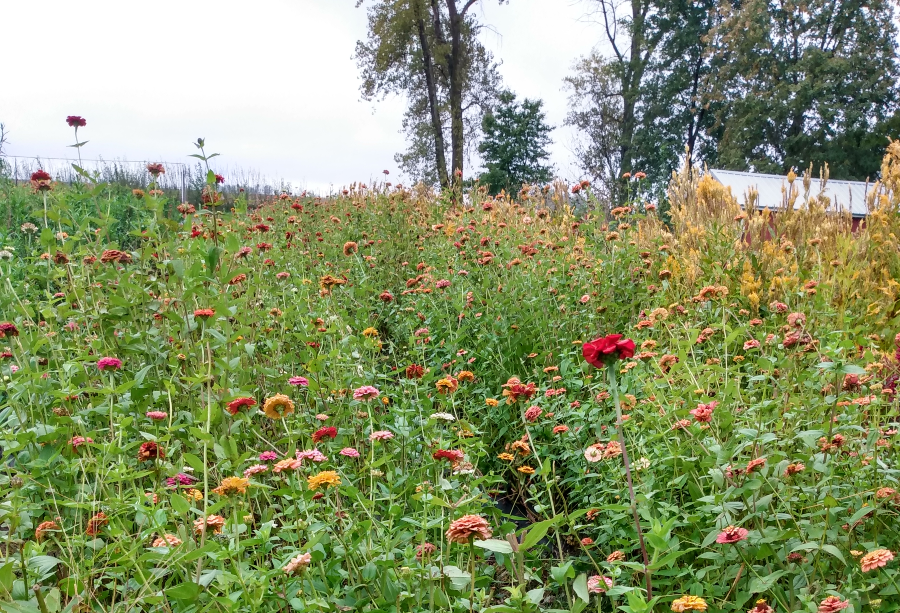The weather is becoming colder, the nights are longer than the days, and the sky is often uniformly grey. Autumn is here, and as much as I love to drink hot apple cider and look at the colorful leaves, it’s hard to deny that I become a little more glum this time of year. This is how I felt when I drove to Delight Flower Farm to interview Maggie Taylor, the founder and owner, about their business and agricultural practices one Friday morning. During my time with her I was reminded that life still develops and evolves through the season of death, and that this dreary time of year can still bring surprises.
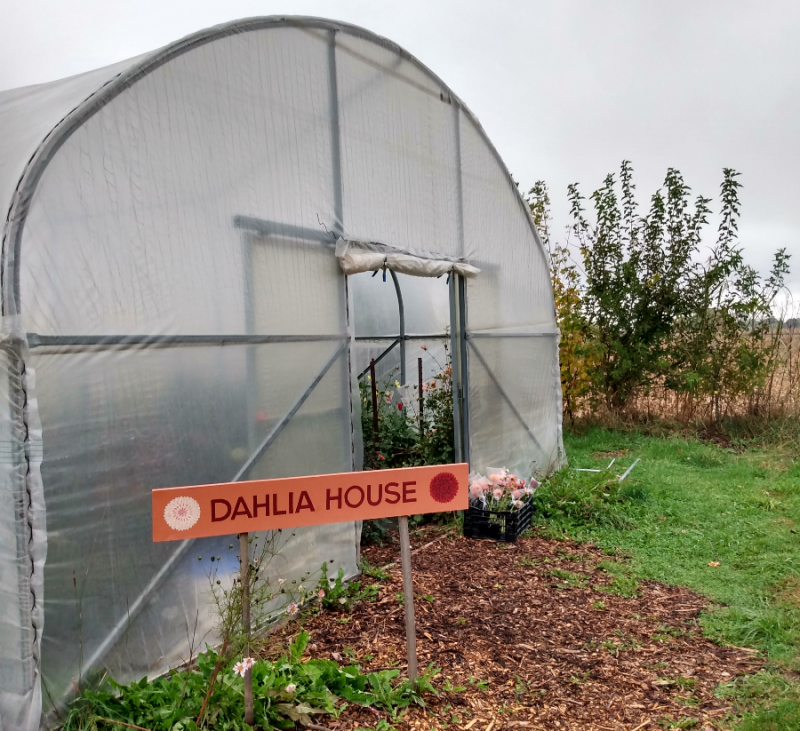
Photo by Michael O’Boyle.
When I arrived at the farm five miles from the western edge of Champaign, I was led down a soggy path flanked by bare fields of brown and tan. My hiking shoes weren’t high enough to keep the mud out, so I was forced to walk to the side where the ground was a little firmer. When Taylor greeted me, the first thing I noticed about her was her dull green galoshes. She then led me into Dahlia House – one of their permanent enclosed structures – where it was a little warmer are more humid. There were several rows of blossoming and very green plants. She asked if she could work while we talked before bending over and starting to clip white dahlia blossoms.
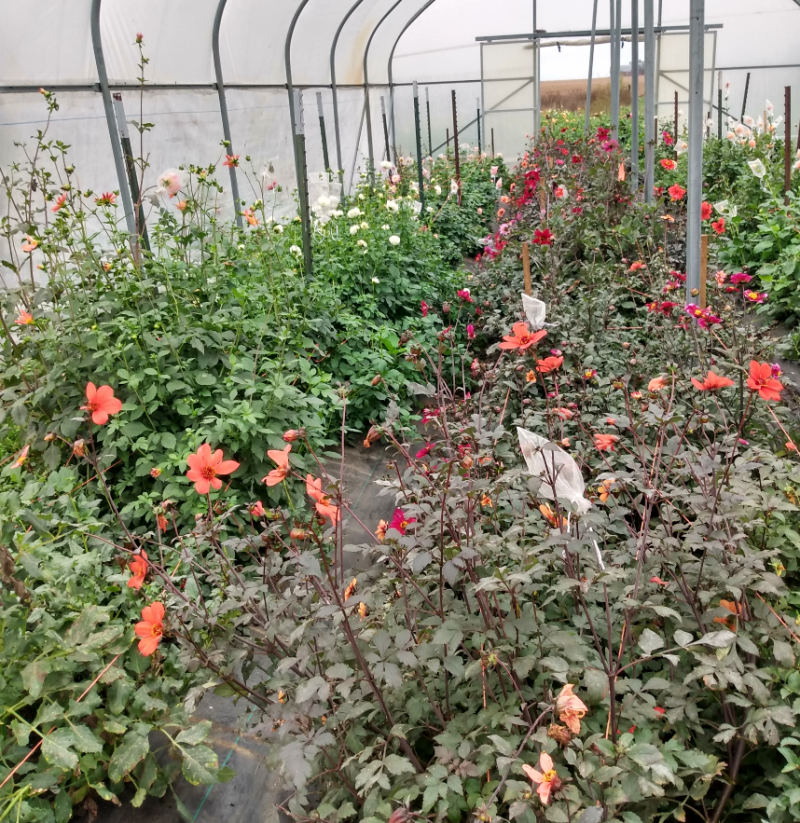
Photo by Michael O’Boyle.
I had come intending to discuss their commitment to regenerative farming, and Taylor was happy to discuss their practices. She explained that they are working towards no-till farming by planting in raised soil beds, or berms. Organic matter, such as compost, leaves, and straw are continuously added to encourage microbes and mycelia (the “roots” of fungi) which decompose nutrients for the crops to absorb. Taylor described this relationship as a “community” that results in more productive crops. This is the best option for perennials, which remain rooted year after year, but some flowers, like tulips which require digging to plant the bulbs, require a little more thought. The solution they are considering is placing the bulbs above a bed of organic matter then covering them with more material to create the raised bed.
Organic and regenerative techniques often require more creativity than standard farming. An example on Taylor’s mind when we talked was of a recent infestation of weevils which bore into plant stems but also remain dormant in the soil once the plant is removed. There are several options to remove them without pesticides, such as finding a way to treat the soil, simply not planting in that area for several years, or even planting something else it prefers (a “trap crop”).
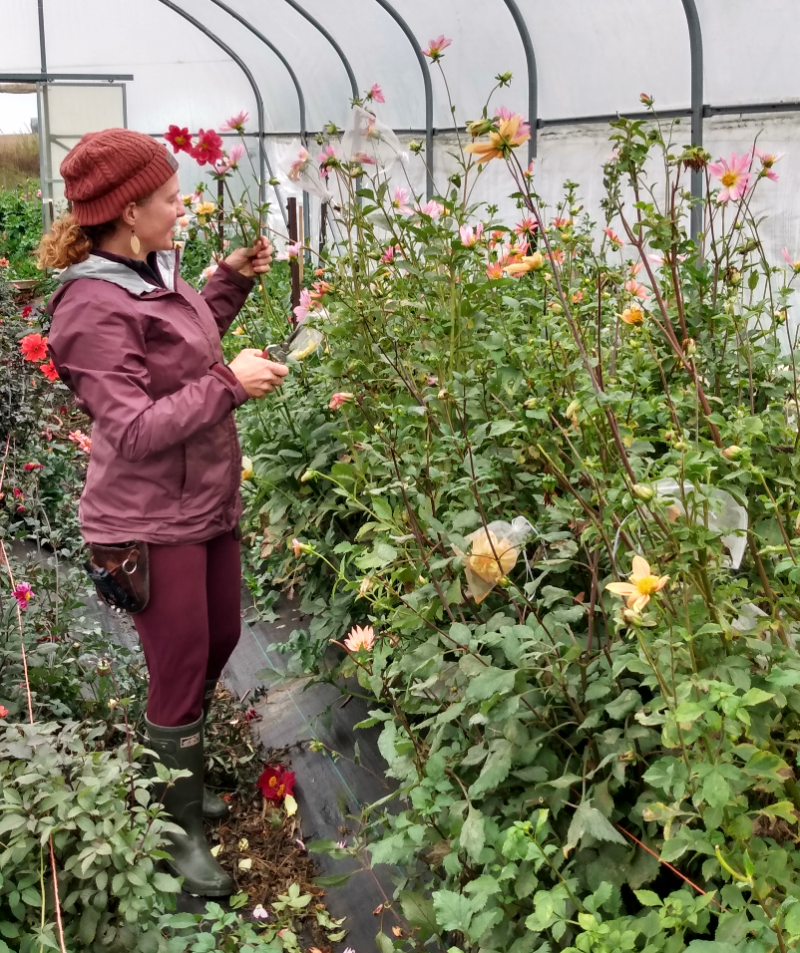
Photo by Michael O’Boyle.
Taylor had made her way down one row and we returned to the entrance. While we were talking, a bumblebee flew between us out of the house. I was surprised to see one in late October on a fifty-something day, but Taylor noted that it was probably drawn to the high pollen levels still present with the blossoming flowers. I expected the farm to be preparing for hibernation through the cold months, but I instead found it very active and full of life. The dahlia plants from which Taylor was harvesting will likely continue producing through Thanksgiving. They were beginning to harvest mums planted back in March and April just coming into bloom now. Taylor also walked me over to their summer flowers; although it looked a bit dreary – “like I feel this time of year,” Taylor said – stems topped with pastel-colored flowers were still sprouting from a mass of rich green.
Indeed, Autumn is only a time of death if we look at some aspects of the surrounding ecosystems. And at Delight, crucial elements of the ecosystem are people and how we perceive our surroundings. They strive to regularly hold public events and encourage others to “cultivate a connection with nature.” They are continuing to help others make this connection, even in the winter months, by hosting wreath-making workshops around the holidays in local venues, such as The Literary in Downtown Champaign on December 8th at 6:30 p.m. For Taylor, having the wreath-makers smell the evergreen branches and feel the sap on their fingers as they add dried flowers and holly berries gives them a direct relationship with the nature in the object, making it far more meaningful than something artificial hung year after year.
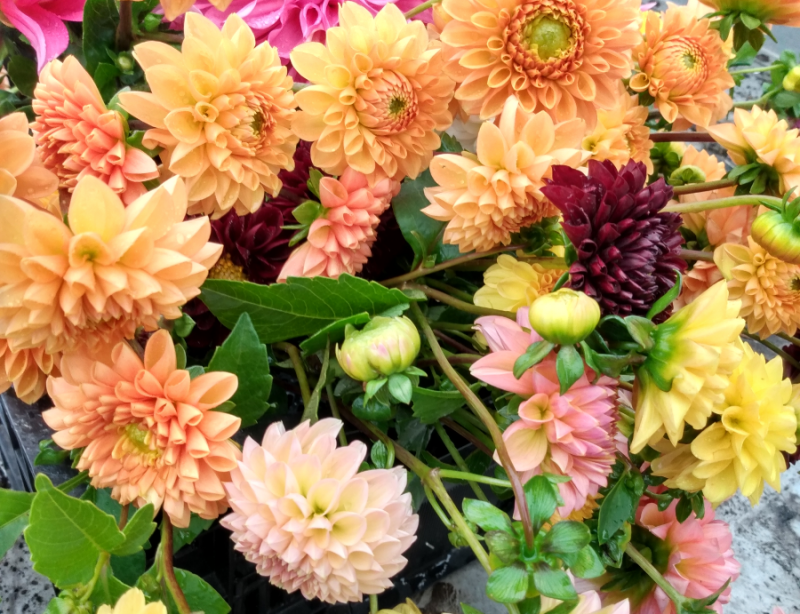
Photo by Michael O’Boyle.
After we finished talking, I was sitting in my car with my nose in my phone pulling up the route back into town. Then, I looked to my left and saw Taylor standing outside my window with a bouquet in her arms: some of the orange dahlias she was clipping earlier with purple lupines – Halloween colors, per Taylor. Caught speechless, I listened as she explained to keep them in a vase and change the water every couple of days. One week later the blossoms are still living in in my kitchen window. Some of the petals are wilting, but the flowers are still going strong.








